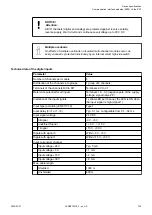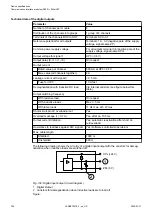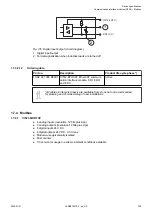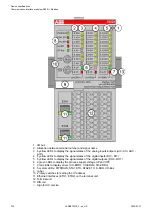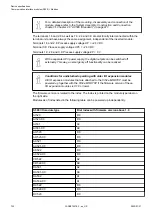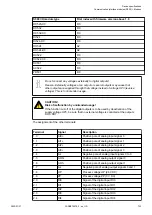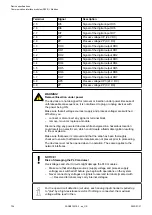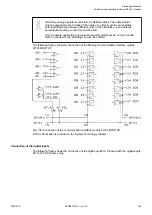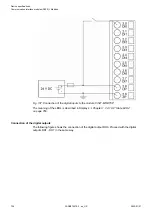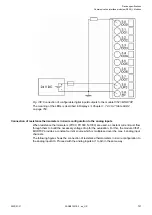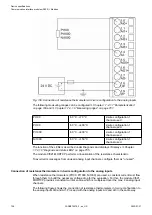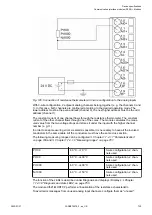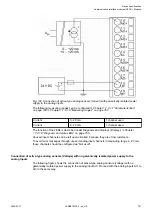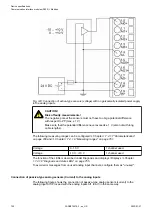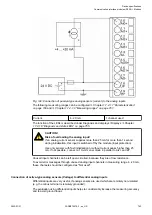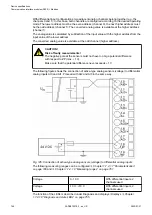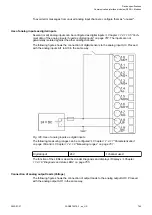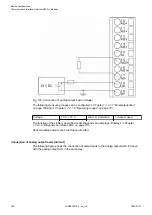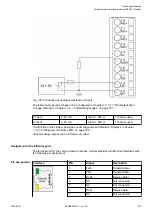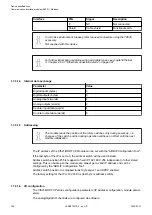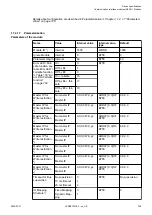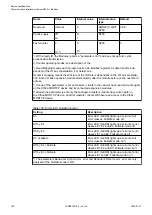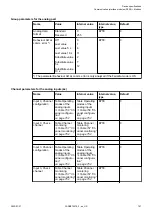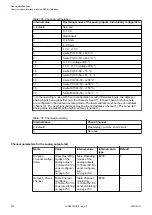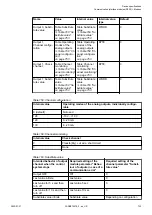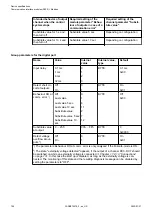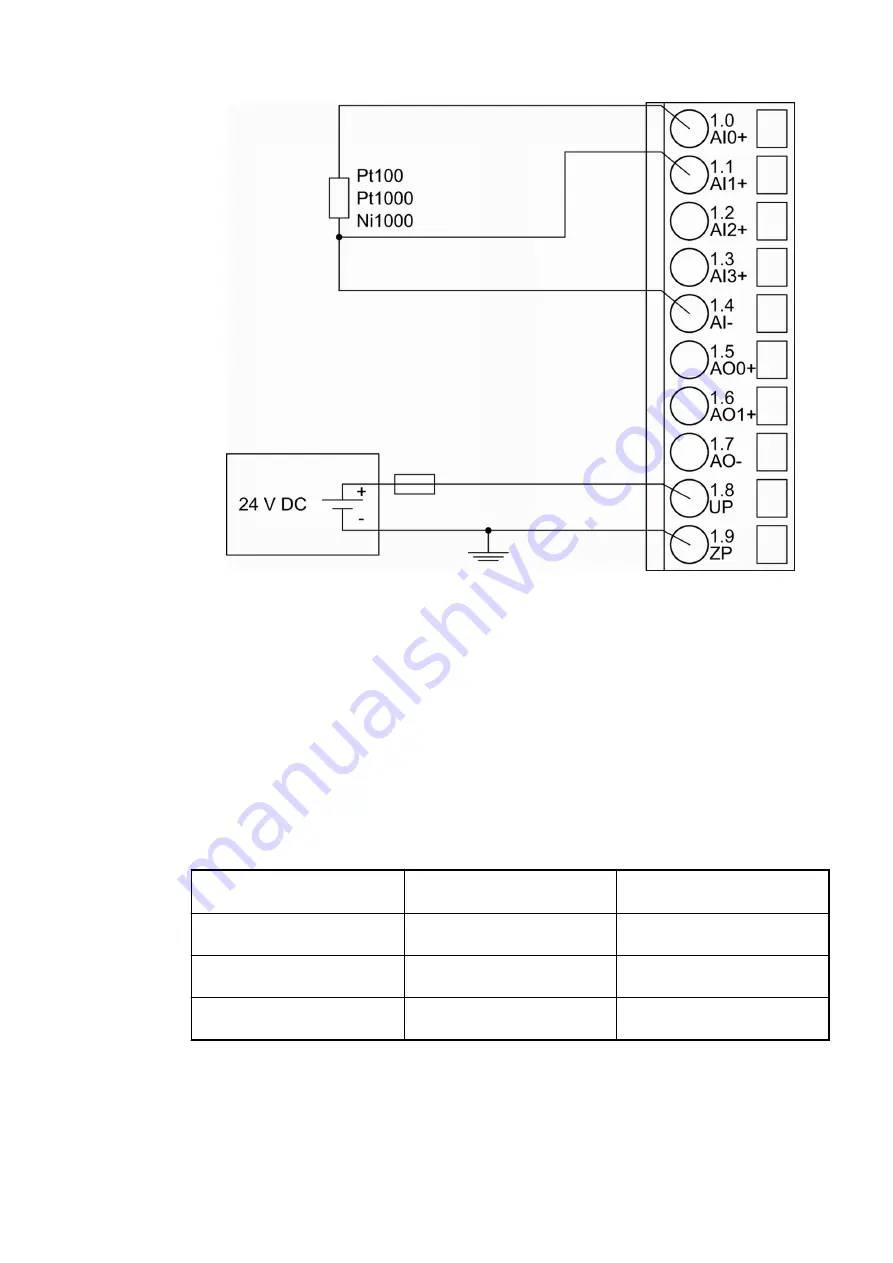
Fig. 140: Connection of resistance thermometers in 3-wire configuration to the analog inputs
With 3-wire configuration, 2 adjacent analog channels belong together (e. g. the channels 0 and
1). In this case, both channels are configured according to the desired operating mode. The
lower address must be the even address (channel 0), the next higher address must be the odd
address (channel 1).
The constant current of one channel flows through the resistance thermometer. The constant
current of the other channel flows through one of the cores. The module calculates the meas-
ured value from the two voltage drops and stores it under the input with the higher channel
number (e. g. I1).
In order to keep measuring errors as small as possible, it is necessary to have all the involved
conductors in the same cable. All the conductors must have the same cross section.
The following measuring ranges can be configured
Chapter 1.7.4.1.7 “Parameterization”
Chapter 1.7.4.1.9 “Measuring ranges” on page 761
:
Pt100
-50 °C...+70 °C
3-wire configuration, 2 chan-
nels used
Pt100
-50 °C...+400 °C
3-wire configuration, 2 chan-
nels used
Pt1000
-50 °C...+400 °C
3-wire configuration, 2 chan-
nels used
Ni1000
-50 °C...+150 °C
3-wire configuration, 2 chan-
nels used
The function of the LEDs is described under Diagnosis and displays / Displays
1.7.4.1.8 “Diagnosis and state LEDs” on page 755
.
The module CI521-MODTCP performs a linearization of the resistance characteristic.
To avoid error messages from unused analog input channels, configure them as "unused".
Device specifications
Communication interface modules (S500) > Modbus
2022/01/31
3ADR010278, 3, en_US
739

